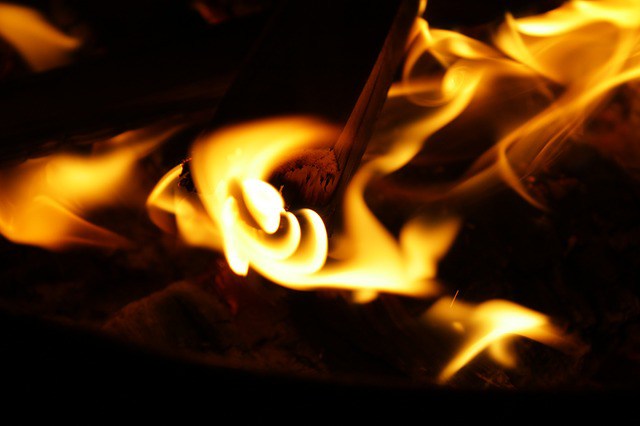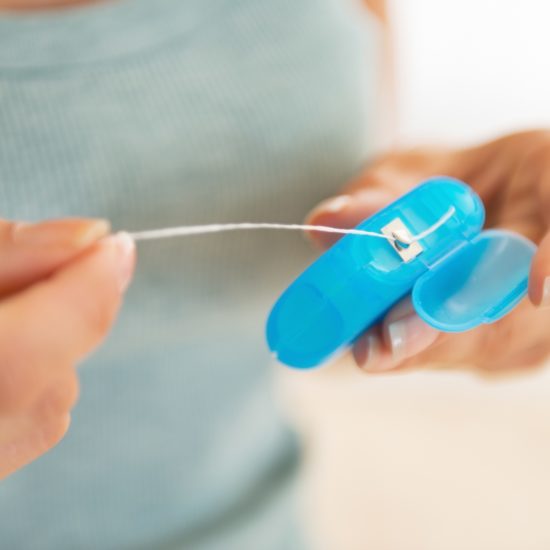
Fire making – as we are used to – results from a chemical reaction and some friction (whether from a match or lighter). Even those lighters with a glowing element deploy the principles for fire lighting. In the absence of matches and lighters (and ignoring the ‘elbow grease’ methods for making fire) several chemical reactions result in combustion, without requiring additional help from a match to get them going. In a desperate situation you can make chemical fires without matches or a lighter.
Three elements need to be present to constitute a fire – heat, oxygen and fuel. Fuel may be solid, liquid or (oxidizable) gas. When striking a match or flicking a lighter, the friction provides the heat as a spark, open air contributes the oxygen and the fuel is what you supply – in most cases a carbonaceous or nitrogenous substance. To kill a fire you remove one of the three elements – in most cases the oxygen (by smothering), but also by cooling or isolating the fuel.
There are many chemical reactions that lead to combustion. Some are more dangerous and people with no experience in this regard should stay away from those. For instance stay away from black powder used as propellant in shooting or blasting. This is an explosive. How many times have we seen (on TV) that a bullet is pulled from a cartridge and the propellant then used for starting a fire, or that barrel of black powder used as a distance fuse. Those are very controlled circumstances and rather dicey, even when using nitro propellant. That’s (reasonably) ok if yours is nitro based, but keep away from black powder. The thing is that black powder is compressed (e.g. in a muzzle loader) so that there is no airspace over the powder. In contrast, nitro-based propellants are normally (not always) not compressed and an airspace is allowed between it and the bullet (mild compression in big bores are not uncommon). Never overdo anything, and especially so when deploying the might of nature.
There are very simple chemical methods by which a fire can be started. This brief article explains four ways to make fire using chemical reactions. No matches or lighter are needed to start the fire.
WARNING. PLEASE USE MINUTE AMOUNTS AND VOLUMES OR YOU MIGHT SCORCH YOUR EYEBROWS/MUSTACHE/BEARD!
Chemical Fire #1
- Potassium permanganate (in some places also known as Condy’s crystals) – an oxidant
- Glycerine – supplying the fuel
- Water – as reaction facilitator (it dissolves the potassium permanganate and accelerates the reaction)
Add a few drops of glycerine to a few crystals of potassium permanganate. Accelerate the reaction by adding a couple of drops of water. Alternatively a solution of the potassium permanganate can be made and (drop wise) added to the glycerine.
Chemical Fire #2
- Acetone (as in nail polish remover)
- Sulfuric acid (as in battery acid from the car – it’s appreciably weaker but should still work; the full strength version is preferable but should be handled with care as it is seriously corrosive). Keep this away from water as the adding of either to the other also generates a lot of heat and sputtering.
- Potassium permanganate (Condy’s crystals)
Soak a tissue with acetone to make it more flammable. Draw sulfuric acid into a glass pipette (if you do not have a pipette do not use a metal spoon, rather a sturdy plastic one). Dip the pipette into potassium permanganate so that the tip of the pipette is coated with a few crystals. Dispense the sulfuric acid onto the tissue. The potassium permanganate and sulphuric acid mix to produce manganese heptoxide and fire. If using the plastic spoon, let the sulfuric acid drip onto the acetone soaked tissue and trickle some potassium permanganate crystals onto the tissue. Again, keep your face away from the vicinity of the reaction.
Chemical Fire #3
- Sodium Chlorate crystals (an alternative for calcium chlorate which can be used to purify water)
- Sugar (yep that sweet stuff) in crystalline form (and for the diet conscious, xylitol should work as well – this is the fuel supply)
- Sulfuric acid
Mix a small amount of sodium chlorate and sugar (really small, like tip of a tea-spoon of each). Initiate the reaction by adding a few drops of sulfuric acid. Watch the eyebrows or mustache/beard.
Chemical Fire #4
- Ammonium Nitrate powder (component of fertilizer)
- Finely ground Zinc powder (I guess you can make your own by working at a piece of Zinc – that’s the element – with a fine file)
- Hydrochloric acid (pool acid is useful)
Mix together a small amount of ammonium nitrate and zinc powder. Initiate the reaction by adding a few drops of hydrochloric acid.
Chemical Fire Safety
If you are performing a demonstration of chemical fire using any of these reactions, use very small amounts of the chemicals listed for each fire. Wear proper safety gear and work on a fire-safe surface. Should you intend to actually make fire in any of these ways, have your kindling close at hand as a chemical fire is not lazy. It will burn out quickly if you do not utilize it. Best is to actually initiate it on a dry leaf, paper sheet or piece of bark, that will also be consumed in the reaction and serve as a kind of ‘starter’.
Should you carry any of these chemicals in your BOB/BIB or store them in your stash, please ensure absolute isolation from one another (in the BOB/BIB) and proper ventilation (in the stash). When actually starting a fire in any of these ways, prevent inhaling any fumes which may be generated during the process, as these may irritate your airways and nasal/oral linings.
Not all of these chemicals are necessarily freely available everywhere, but they are not uncommon. When stored properly most (if not all of them) should last for years. Acetone is very volatile and may evaporate if not sealed effectively. Similarly, hydrochloric acid tends to lose its chlorine, bind oxygen and convert to less active forms which may not be as effective in fire starting. The chlorine is the oxidizing agent there.
So, check it out – BUT BE SAFE OUT THERE!




















